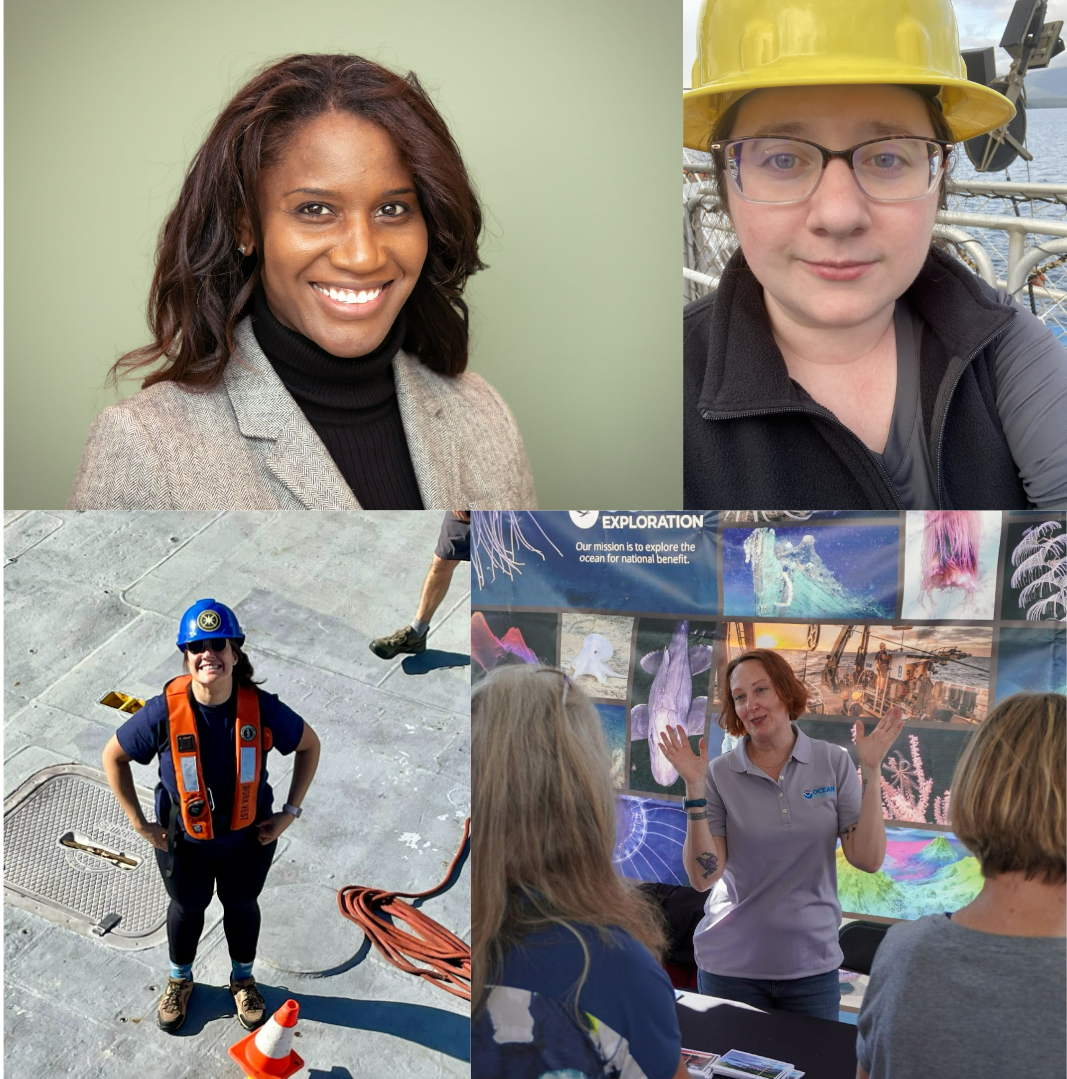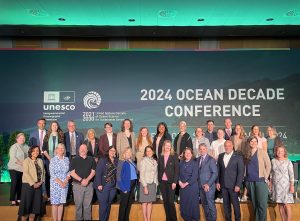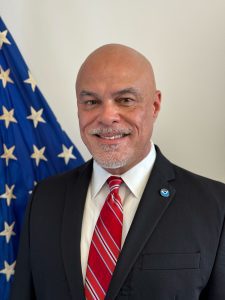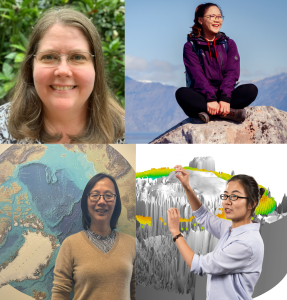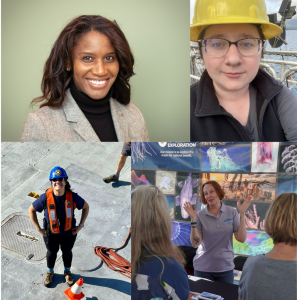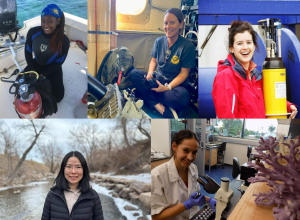March is Women’s History Month, and throughout the month we are recognizing the women of NOAA Research who contribute to the innovative and impactful progress towards NOAA’s mission. This week we are highlighting some of the women who are making critical contributions to NOAA’s work in ocean and Great Lakes exploration and stewardship. While the ocean covers approximately 70% of the globe, and the Great Lakes represent 21% of the world’s freshwater, there is still so much we don’t know about these waters. Continue reading to meet four women who work in ocean and Great Lakes research and are supporting everything from discovering new species, shipwrecks, and an intriguing golden orb in the deep ocean, to tracking ice coverage and mitigating climate impacts like flooding to communities in the Great Lakes region.
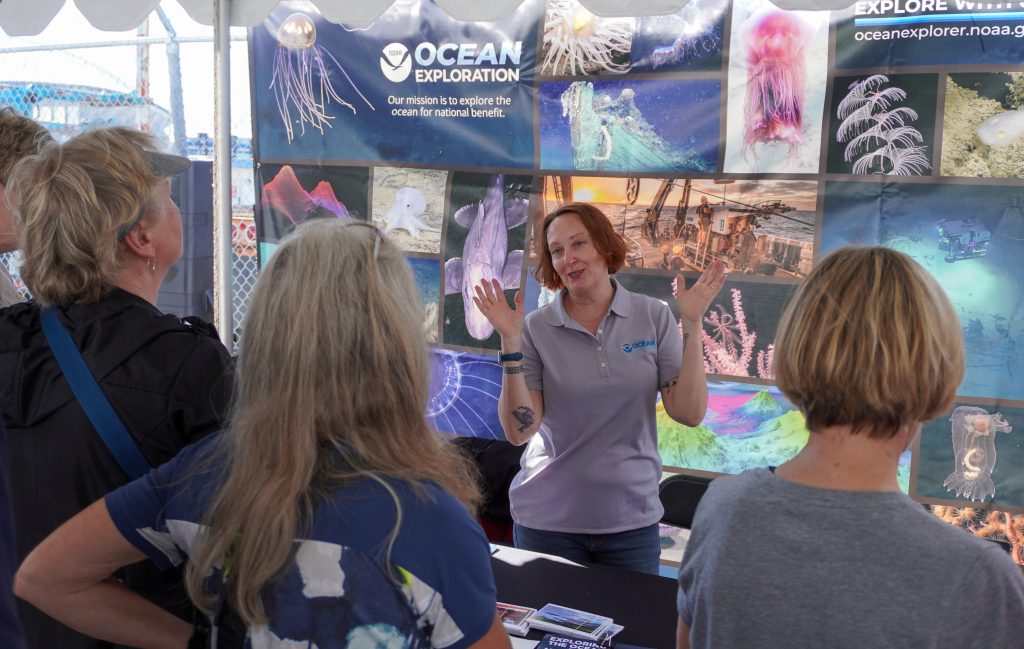
As the Communications Team Lead of NOAA Ocean Exploration, Emily Crum’s job never gets boring. She works on a variety of projects including rebuilding the program’s website, handling media inquiries, and managing social media. She has enjoyed the opportunity to modernize the website to share activities, accomplishments, and discoveries with the public, the science community, educators and students, and more in a useful and engaging way. Emily is also the communications lead for the new “Beyond the Blue: Illuminating the Pacific” campaign, which uses ocean mapping and exploration to better understand the waters of the Pacific Island region. Her role involves bringing together regional partners to craft effective messaging and products to tell the campaign story, in terms of both the science and the people involved who make “significant contributions to managing and protecting these vast areas of the Pacific.”
Read about Emily’s diverse educational and work experience that led her to a career in science communications and advice she has for women navigating their own paths in the field by clicking here.
Emily’s educational and professional background included geology, art studio and graphic design, communications, policy, and business. This array of interests may seem random to some, but they fit together nicely to support her work communicating federal science. She encourages young people to explore every avenue that seems interesting and to be bold and take risks. “While it is important to have a plan, don’t worry too much about where you’re going to end up… You may stumble upon something totally new that will make you better at your job or push you in a new and exciting direction.”
For young women looking to enter the field, Emily says it is important to find strong mentors and role models who can provide support through rough patches. Joining professional organizations and attending events can help you build your professional network. Emily also believes that it is important to eventually become a mentor because you will learn from the rewarding experience and allow for other young women to see themselves in you.
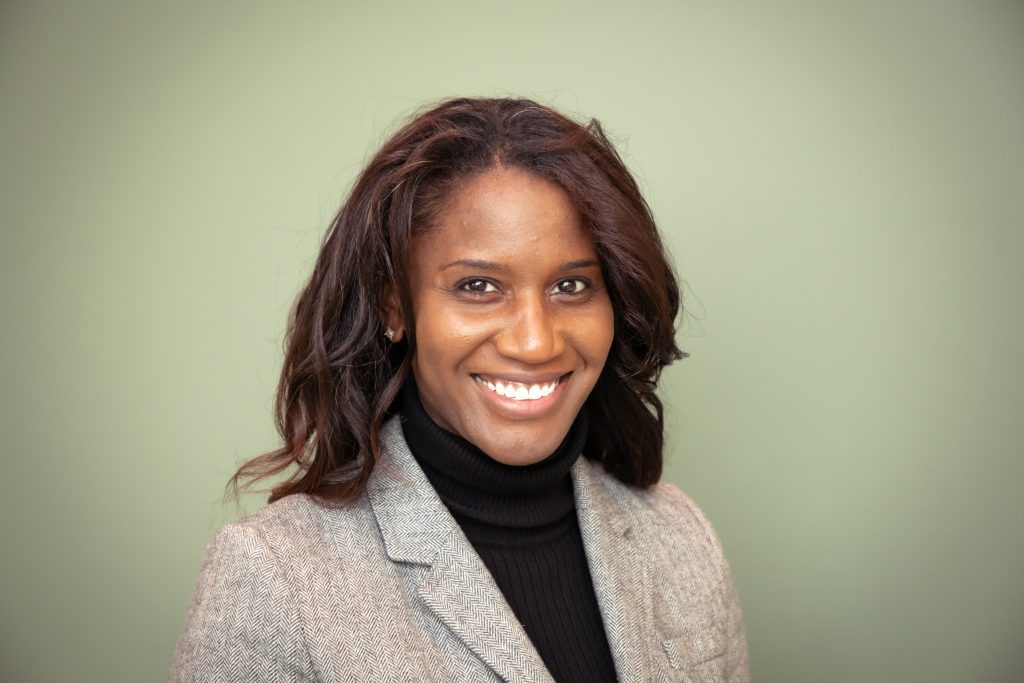

NOAA’s Great Lakes Environmental Research Laboratory (GLERL) in Ann Arbor, Michigan is home to Dr. Alisa Young who serves as the new Weather and Climate Portfolio lead and as the Great Lakes Water Quality Agreement (GLWQA) U.S. Co-Chair for Annex 9 on Climate Change Impacts. While GLERL has historically focused on lake ecology and lake science, the lab is expanding its body of work to include more weather and climate research. By coupling weather and climate science with practical user and community needs, Alisa has contributed to a broader dissemination of knowledge and stewardship efforts of the Great Lakes ecosystem particularly under the context of a warming climate. As the U.S. GLWQA Annex 9 U.S. Co-chair, she is spinning up a greater scope of research and engagement on Climate Change Impacts to support the other GLWQA Annexes and to support the need for regional future climate projection data and information. In addition to this work, some of Alisa’s research focuses on understanding Great Lakes heat waves drivers and impacts, many details of which remain undetermined as the Great Lakes do not have the same biodiversity as marine/saltwater systems. She envisions that GLERL’s Great Lakes Heat Wave research will advance NOAA’s broader understanding of heat wave events with respect to both freshwater lakes and the open ocean.
Read about how Alisa has been able to boost community resilience while keeping a positive mindset by clicking here.
Alisa has infused a broader coordination between GLERL, community members, and municipalities to better understand and communicate climate science to support regional awareness and planning efforts. She remains optimistic and steadfast in her work by focusing on how climate science, adaptation, and mitigation strategies can help individual communities and creates new opportunities for “NOAA to become more deeply linked to a broader scope of climate service delivery at hyper local levels.” Alisa enjoys being part of a team that helps meet the growing needs of the Great Lakes region and NOAA research.
Alisa’s guidance to young girls in pursuing careers in STEM is to leverage your network, understand that there is great strength in developing collaboration and a good team. She says to not get bombarded with worry when you are the only woman on your team or perhaps the only minority in the room. “Work hard and believe in your ability to advance science and build your career.”
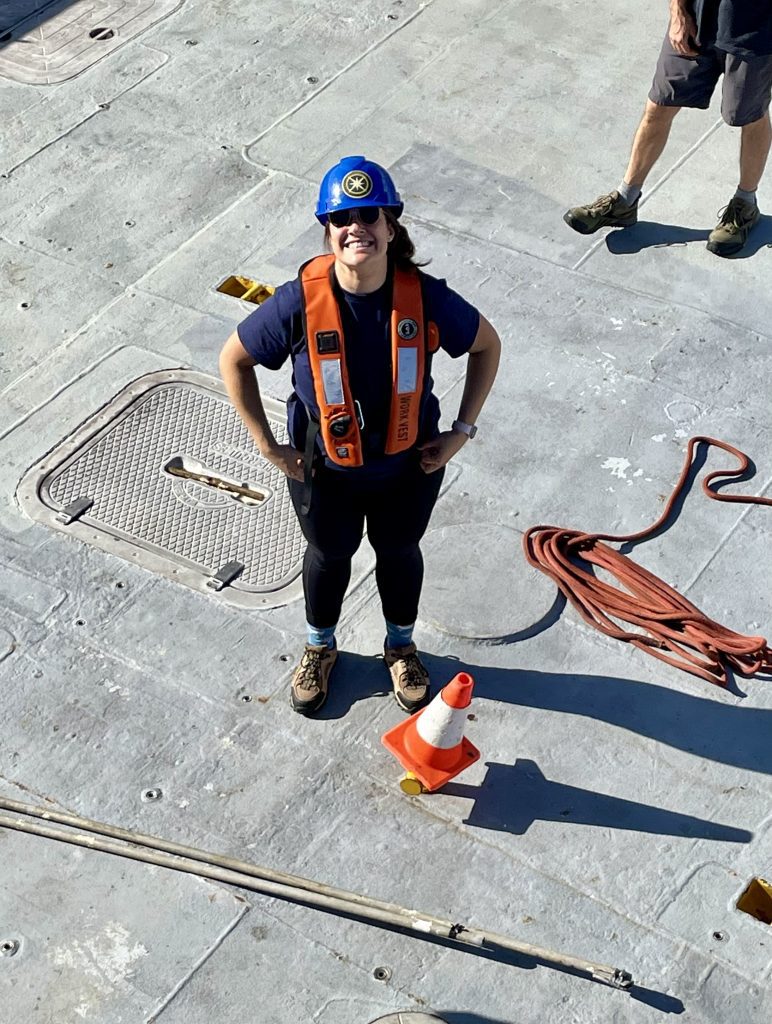

Trish Albano is an Expedition Coordinator for NOAA Ocean Exploration. In this role, she acts as a project manager, planning and executing ocean exploration expeditions that collect publicly available data in areas of the deep ocean that people know very little about. She is currently planning for the upcoming NOAA Ship Okeanos Explorer field season in and around Hawai’i, which will be part of a broader collaborative ocean exploration campaign called “Beyond Blue: Illuminating the Pacific” that aims to explore the deep waters in the Pacific Islands region.
Read about Trish’s experience of being a woman in ocean exploration, and how ocean exploration is a team sport by clicking here.
While ocean science started as a male-dominated field, Trish says she considers herself “incredibly fortunate to be part of the most exceptional community of women in this field! Both in my office, at sea, and in my personal relationships, I am surrounded by women, both role models and peers, who inspire me to keep pushing the boundaries, even when things get hard.”
As an early career professional, Trish says she can “look around and see women in leadership roles, building their careers, while also making space for the next generation of women who will tackle the future challenges that ocean science presents.” She feels most empowered when she has the opportunity to see students get excited about the ocean, especially young women who are just beginning to discover the possibilities of a career in ocean exploration the same way she did when she was in their shoes.
Trish is constantly reminded that her job is as much about uniting a team of people around the mission as it is about the ocean exploration mission itself. Oftentimes, her team can be at sea for weeks (or months!) at a time, in remote areas far away from home, and working long hours in difficult conditions. As the impacts of climate change become apparent, Trish says that it’s easy to ask ‘what’s the point?’ but it’s these times when she is most grateful to be surrounded by an outstanding team that stays motivated and focused. “As ocean scientists and explorers, we have the immense privilege and responsibility that comes with working in some of the most unique places on Earth. Having these experiences, and getting to do them with incredible people, is something I will always cherish when I look back on my career from both a personal and professional perspective.”


Amanda Maxon, an Environmental Compliance Specialist for NOAA Ocean Exploration, ensures that the NOAA Ship Okeanos Explorer has all of the applicable compliance, permits, approvals, clearances, and more that are required for each expedition. Amanda is currently working on developing an Essential Fish Habitat Programmatic consultation to cover the technological capabilities aboard the NOAA Ship Okeanos Explorer and other research vessels carrying out NOAA Ocean Exploration funded projects.
Read about one of Amanda’s biggest career moments, where she finds hope in ocean exploration, and her advice for women entering the field by clicking here.
Amanda felt proud of her career when she was able to see the real-time application of the work she leads. “Environmental compliance positions are typically in the office, so going out to sea and seeing firsthand the challenges and successes of the species-specific mitigation measures was instrumental to my understanding and application of the various laws and regulations that are required during an expedition.”
Working in ocean science, Amanda finds hope knowing that people are acknowledging the importance of research and understanding the impact of the ocean on their daily lives, even though they may live thousands of miles away. She hopes to see more people discussing the importance of implementing environmental compliance and recognizing that protecting our natural resources is a team effort.
For young women entering the field, Amanda provided the advice that it is ok to not know the exact career you want to pursue. “If you are not sure, try interning, volunteering, or reaching out to a professional in the field of study you are interested in before putting all of your energy into one field. It is also ok to fail or come back to the field at a later point in time.”
